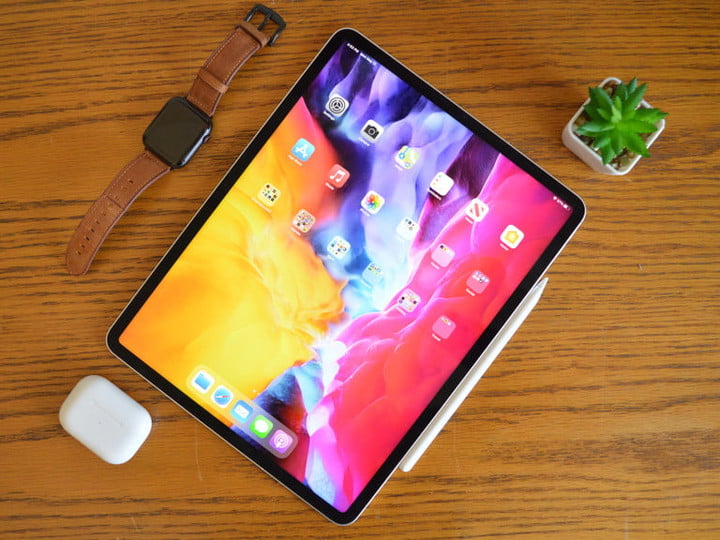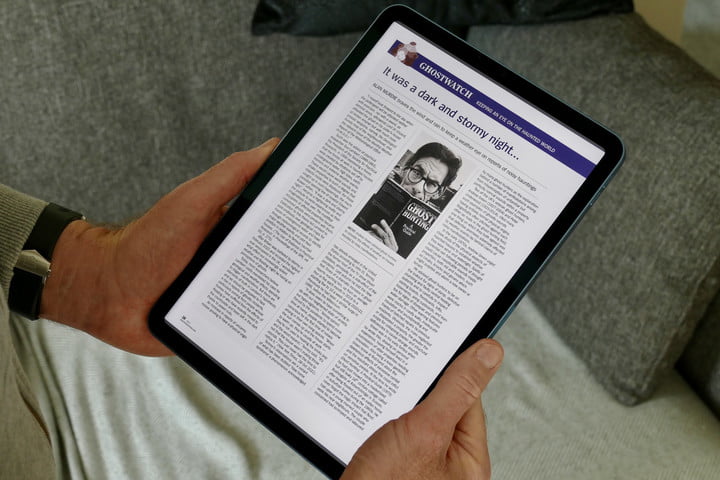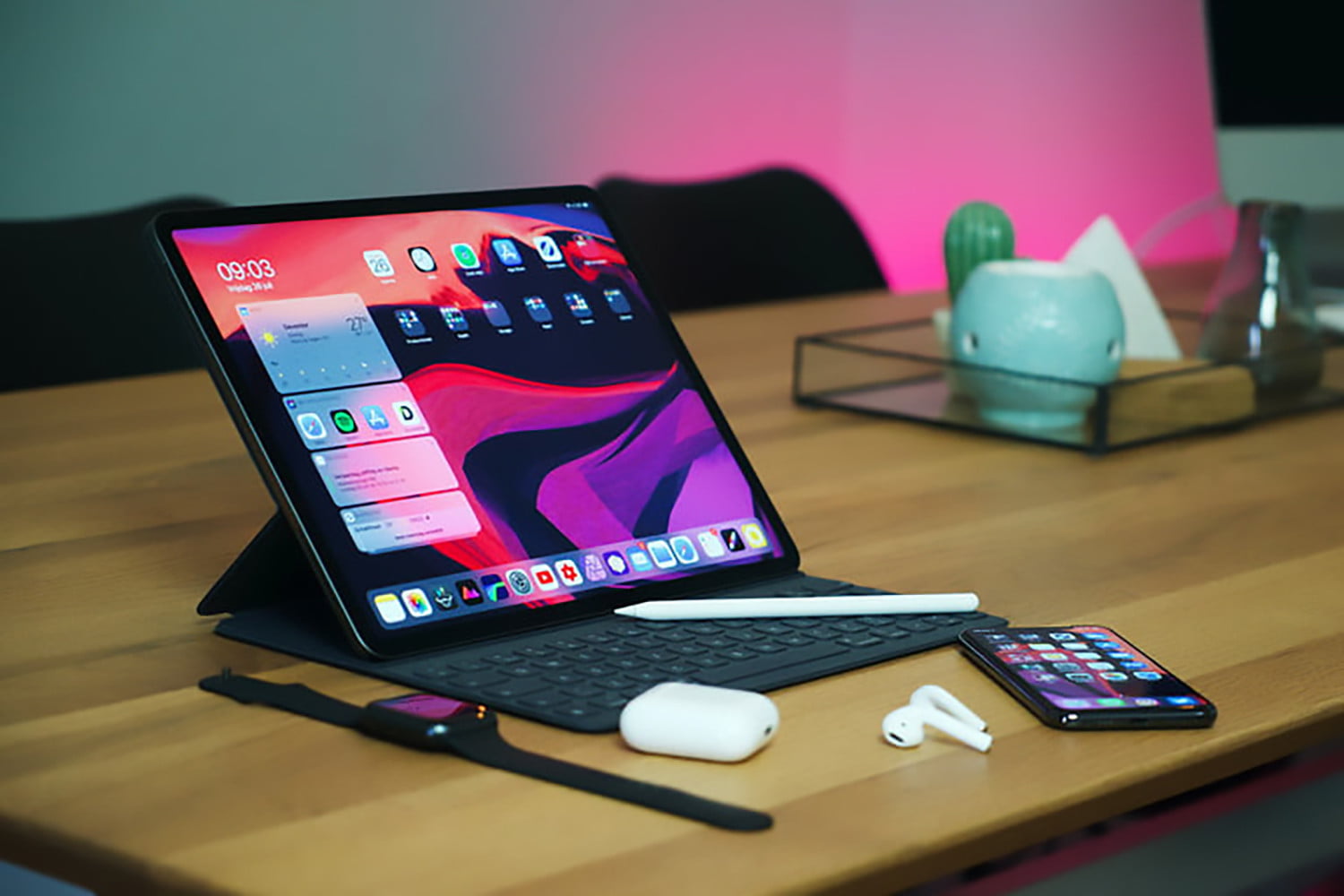Faced with using the Apple iPad Air 5 or the iPad Pro, I choose the iPad Pro every time. The reason is not that the iPad Air 5 is a bad product, far from it. It’s that the iPad Pro has the one major feature missing from it — Apple’s ProMotion 120Hz screen. I’ve been using both the iPad Air and an iPad Pro (2020) for a few weeks now, and the smoother, flicker-free screen on the iPad Pro keeps me coming back to it.
What is ProMotion?
Before we get into why it makes the iPad Pro superior, let’s talk about what the ProMotion 120Hz feature is. It’s Apple’s name for an adaptive screen refresh rate, and the feature is found on some iPad tablets, the iPhone 13 Pro, and the iPhone 13 Pro Max. It dynamically adjusts the screen refresh rate up to 120Hz and down as low as 24Hz on an iPad and 10Hz on the iPhone 13 Pro and Pro Max, resulting in less flicker and smoother animations and scrolling when using the device, along with some power efficiency benefits too.

It’s not especially new technology. Adaptive screen refresh rates have been extensively used as a feature on smartphones from other manufacturers for a while, and if you’re using a high mid-range or flagship phone from the last few years there’s a good chance you’re staring at a 90Hz or 120Hz refresh rate screen already. Unless you buy a cheap smartphone today, it’s actually quite hard to find a phone without a high refresh rate screen.
However, this isn’t the case with Apple’s current iPad range. It’s not that surprising the cheapest iPad 10.2-inch tablet doesn’t have the feature, but you may expect the most recent iPad Air (5th generation) to use a ProMotion 120Hz screen, especially since it starts at $599. Sadly, Apple has not included it. The only tablets with the ProMotion 120Hz screen in Apple’s range are the two iPad Pro models.
I noticed immediately
High refresh rate screens are a feature that can be passed off as something you never really notice, but I can assure you of two things: First, compare a recent iPad Pro directly with the iPad Air 5 and you can see the differences, and second, once you’ve lived with a high refresh rate screen it’s impossible to go back to a lower refresh rate screen.
I have used an 11-inch iPad Pro (2020) practically every day since it was released and noticed the iPad Air 5’s standard 60Hz refresh rate immediately. It didn’t take a while or require me to use certain apps, it was from the very second I started setting the tablet up.

What does 60Hz look like in comparison? Blurry. When you scroll through text, open and close apps, or use a feature like Pages’ Presenter Mode, the iPad Air’s screen introduces blur, flicker, and jitter. It’s obviously not like using the tablet when wobbling about strapped into the seat of a rollercoaster, but it’s still obvious enough to my eyes that it makes using the tablet a little unpleasant. My eyes simply don’t deserve to be forced to re-adjust to a 60Hz screen after the slick glory of 120Hz.
It’s not just when I’m scrolling through apps and websites; I notice the difference when using iPadOS itself. Close an app and you can see more individual frames of animation as the window minimizes on the iPad Air than you can on the iPad Pro. Scroll quickly through menus, Pages, or a browser and the text remains readable on the iPad Pro for longer than it does on the iPad Air. This means you can scan a page more effectively.
The ProMotion 120Hz feature makes the iPad Pro a more pleasant, comfortable device to use. When everything is smooth and slick the tablet’s high price also seems more justifiable — it feels more put-together, more powerful, and more expensive. Wait a second, you’re thinking, how do I know this is all because of the ProMotion 120Hz screen and not a difference in software, processor, or something else? When I turn off the ProMotion effect under the Accessibility menu on the iPad Pro, it performs exactly like the iPad Air 5.
Can you show me?
I can tell you there’s a genuine difference between 60Hz and 120Hz screens on the iPad Air and Pro, but that’s not the same as seeing it for yourself. If you’re considering an iPad, I do recommend visiting an Apple Store and trying the Air and Pro out, but in the meantime, I’ve done my best to show you with a short video.
What should you look for? The animation of opening and closing Chrome is less smooth on the iPad Air, and the text is readable on the iPad Pro before it is on the Air. In the scrolling text demonstration (which uses Pages’ Presenter Mode) you can see the text just isn’t as smooth and jitter-free on the iPad Air.
Now, I understand what you’re seeing won’t look like much, and the differences are at times almost imperceptible, but what you have to remember is these differences are constant. They are there every time you open an app, and every time you scroll through text or a menu and that’s why it’s noticeable, and why it becomes fatiguing.
Care for your eyes
Probably like many of you, I stare at screens for too long on a daily basis. I therefore want those screens to be friendly and comfortable to look at and to avoid eye strain and fatigue as much as possible. The 20-20-20 rule (look 20 feet into the distance for 20 seconds, every 20 minutes) described by an optometrist in our story on mobile devices and eye strain is a help, but what about higher refresh rate screens? Surely the smoother appearance is better for our eyes?
I asked optometrist Dr. Molly King if there was any science behind high refresh rate screens helping to reduce strain and fatigue. While she noted there was little in the way of research on the subject right now, she was positive about any potential benefit:
“The eye’s ‘processing speed’ or ability to detect flicker is estimated to be between 50Hz and 100Hz. It is thought that most people’s eyes process at 60Hz, though it appears some people may be more sensitive to flicker,” she told Digital Trends in an email. “Anything less than this ‘processing speed’ of the eye will appear strobe-like and disorienting. To me, it makes sense that asthenopia [the medical term for eye strain or eye fatigue] is relieved with a higher refresh rate of screens, as the 60Hz screen is refreshing right at the threshold for most people’s eyes, but 120Hz is refreshing faster than the eye’s ability to detect flicker, making the entire viewing experience more comfortable.”
The iPad Pro is the way to go
I use an iPad every day, and having both the iPad Air 5th generation and the iPad Pro here means I get the choice of which one to use. I use the iPad Pro, and it’s solely because of the ProMotion 120Hz screen. The iPad Air’s M1 processor is immensely powerful and the tablet is lightweight, but the 60Hz screen just doesn’t have that same slick sheen or visual comfort levels as the iPad Pro, and I don’t enjoy using it as much because of it.
The iPad is the best tablet you can buy, and when you purchase it sensibly it can last for years. Before I got the iPad Pro in 2020, I had been using a 2015 first generation iPad Pro, which still lives on in the hands of a family member. The iPad Pro (2022) starts at $799, while the iPad Air 5th generation starts at $599 so it is quite a lot more expensive. But considering this is a device you will be able to keep, use, and enjoy for (anecdotally) half a decade, it’s worth getting the best one you can, and that’s the model with a ProMotion 120Hz screen.


